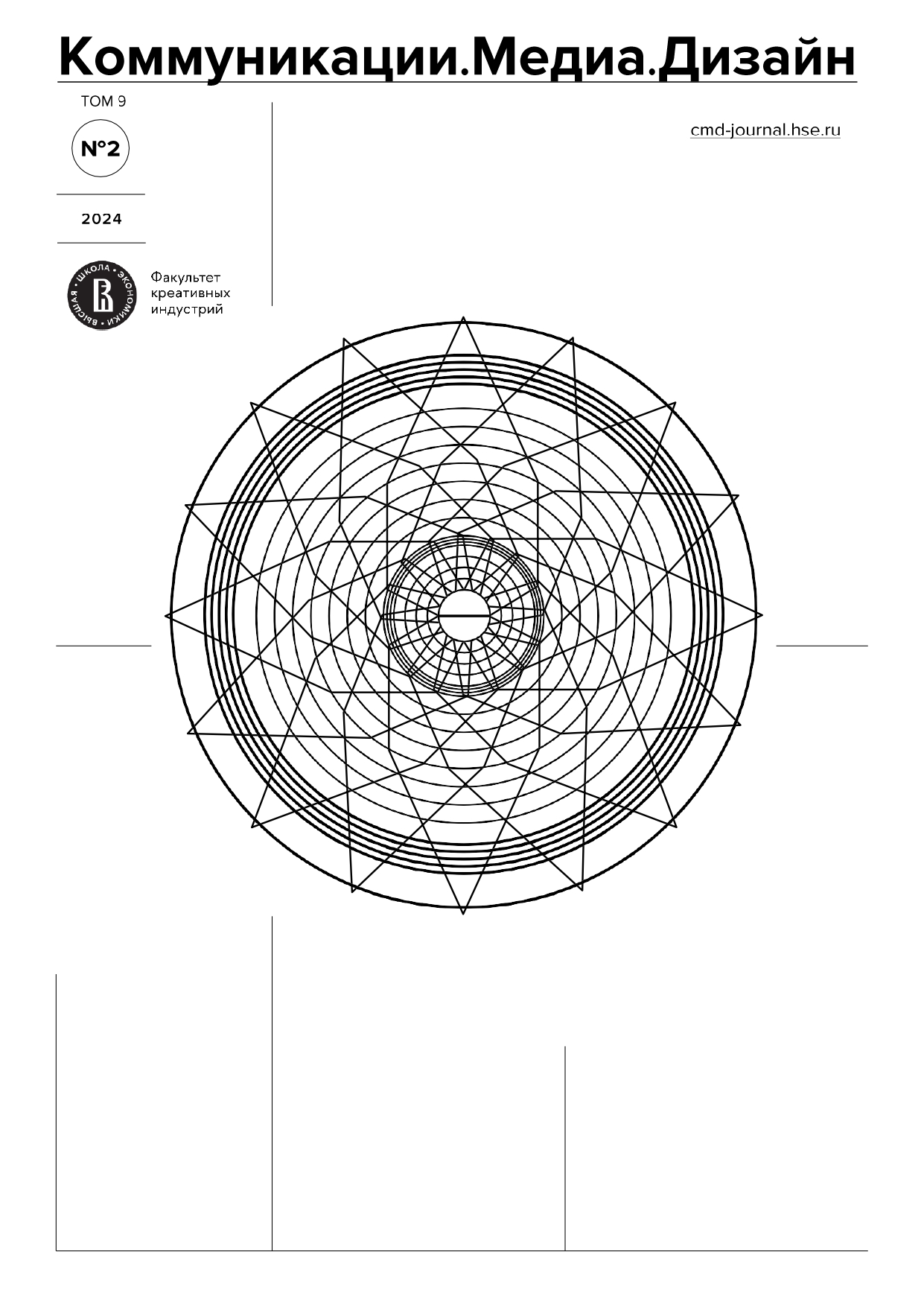The Brainmedia Concept: The Brain as Media and Art
Abstract
The article proposes the concept of Brainmedia, in which the brain is considered as an independent medial dimension in the space of neuroculture. The rapid development of neuroscience, which began in the last decade of the 20th century and received a powerful impetus with the advent of neuroimaging tools, led to a neuroprotection in the history of mankind and the formation of a neurocentric style of thinking.
The brain has transformed from an abstract model of information processing ("the brain as a computer") into a real entity with its own performative subjectivity. He is the "medium and the message." The reinterpretation of key neuroconceptions takes place in the plane of Brain Art, where the brain becomes, on the one hand, an object of creative self—expression of the artist, and on the other - a tool for conceptualization, criticism and analysis of new scientific ideas and discoveries.
The article proposes to analyse the key concepts of neurocultural discourse: "brainhood", "cerebral subject", "neurocentrism", "neuroplasticity", "neuroreductionism", "neuroessentialism", and formulates the conceptual framework for considering the problem of "personhood vs brainhood" in the space of artistic practices.
Downloads
References
Видаль, Ф. (2020). Церебральность и антропологический тип современности. Социология власти, 32 (2), 208–247. EDN: FMBVUI
Гэллоуэй, А. Р., Уорк, М., Такер, Ю. (2022). Экскоммуникация. Три эссе о медиа и медиации (А. Гришин, пер.). Ad Marginem Press.
Малабу, К. (2019). Что нам делать с нашим мозгом? V-A-C Press. https://v-a-c.org/publishing/what-should-we-do-with-our-brain?ysclid=ly07kcgdc0625020283
Писарев, А. (2019). Конфликт бессмертий: биополитика церебрального субъекта и религиозная жизнь в сериале «Видоизмененный углерод». Государство, религия, церковь в России и за рубежом, 37(3), 149–172. EDN: IEFHPH
Федорова, К. (2015). Трансмедиальность, трансграмотность, трансдукция и эстетика технологически возвышенного. В О. Шишко, А. Щербенок (ред.), Расщепление визуального: значение новых медиа, сборник статей по материалам Международного симпозиума «Pro&Contra медиакультуры» (сс. 36–43). Издание Музейно-выставочного объединения «Манеж». EDN: QFHVKK
Филатова, А. А. (2020). Множественный мозг. Социология власти, 32 (2), 13–17. EDN: RDSFKV https://doi.org/10.22394/2074-0492-2020-2-13-17
Фридберг, Д., Галлезе, В. (2023). Движение, эмоция и эмпатия в эстетическом переживании. В Н. Мазур (ред.), Мир образов. Образы мира. Антология исследований визуальной культуры (сс. 476–488). Издательство Европейского университета в Санкт-Петербурге.
Хухтамо, Э. (2016). Как работают образы воображаемого медиакультуры: медиаархеологическая перспектива. В Д. Булатов (ред.), По ту сторону медиума: искусство, наука и воображаемое технокультуры (сс. 46–51). БФ ГЦСИ. https://www.calameo.com/read/004926405b3f1a7880744
Besser, S., Lysen, F. (Eds.). (2023). Worlding the Brain. Brill. https://doi.org/10.1163/9789004681293
Borck, C. (2011). Toys are us: Models and Metaphors in Brain Research. In S. Choudhury & J. Slaby (Eds.), Critical Neuroscience: A Handbook of the Social and Cultural Contexts of Neuroscience (pp. 111–133). https://doi.org/10.1002/9781444343359.ch5
Borgdorff, H., Peters, P. & Pinch, P. (Eds.). (2020). Dialogues Between Artistic Research and Science and Technology Studies. Routledge.
Davis, L. J., Morris, D. B. (2007). Biocultures Manifesto. New Literary History, 38(3), 411–418. https://doi.org/10.1353/nlh.2007.0046.
Frazzetto, G., Anker, S. (2009). Neuroculture. Nat Rev Neurosci, (10). 815–821 https://doi.org/10.1038/nrn2736
Gruber, D. R. (2020). Brain Art and neuroscience. Neurosensuality and affective realism. Routledge.
Logan, R. K. (2018). The medium is the Mess-iah. Communications. Media. Design, 3(1), 13–25. EDN: BMJFCS
Lysen, F. (2020). Kissing and Staring in Times of Neuro-mania: The Social Brain in Art-science Experiments. In H. Borgdorff, P. Peters and T. Pinch (Eds.). Dialogues Between Artistic Research and Science and Technology Studies (p. 170). Routledge.
Lysen, F. C. (2022). Brainmedia: One Hundred Years of Performing Live Brains, 1920–2020. Amsterdam School for Cultural Analysis. https://doi.org/10.5040/9781501378713
McCabe, D. P., Castel, A. D. (2008). Seeing Is Believing: The Effect of Brain Images on Judgments of Scientific Reasoning. Cognition, 107(1). 343–352. https://doi.org/10.1016/j.cognition.2007.07.017
McLuhan, M., Fiore, Q. (1967). The Medium is the Massage: An Inventory of Effects. Penguin Books.
Pitts-Taylor, V. (2012, April 6). Neuroculteres Manifesto. Social Text. https://socialtextjournal.org/periscope_article/neurocultures-manifesto/
Pitts-Taylor, V. (2016). The Brain’s Body: Neuroscience and Corporeal Politics. Duke University Press. https://doi.org/10.1086/692434
Poole, S. (2012, September 06). Your brain on pseudoscience: the rise of popular neurobollocks. The New Statesman, 18. https://www.newstatesman.com/long-reads/2012/09/your-brain-pseudoscience-rise-popular-neurobollocks
van de Werff, T., Slatman, J., & Swierstra, T. (2016). Can We “Remedy” Neurohype, and Should We? Using Neurohype for Ethical Deliberation. AJOB Neuroscience, 7(2). 97–99. https://doi.org/10.1080/21507740.2016.1189978
Vidal, F. (2022). Performing Brains on Screen. Amsterdam University Press.

